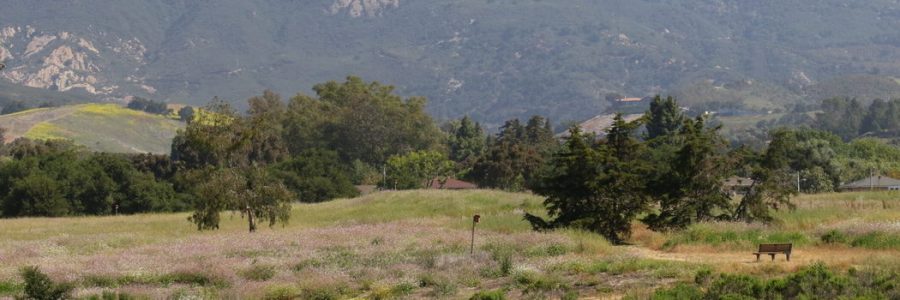The Conservation/Science Committee (ConSci) acts locally to advocate for strong protections for birds and bird habitat, with an emphasis on riparian areas and regional open spaces. We do this through a variety of means, including providing expert knowledge, thorough analysis and public comment, meetings with local officials, and outreach through our supporters. We welcome your interest and involvement.
The ConSci Committee meets on the first Wednesday of each month at 6:30 PM via Zoom.
For further information contact Jessie Altstatt, the ConSci Committee Chair.

Goleta Proclaims “International Dark Sky Week”
The City of Goleta proclaimed the week of April 21-28, 2025 as “International Dark Sky Week.” Led by Jessie Altstatt, our Conservation and Science Chair, the purpose of this event is to raise awareness of light pollution and provide solutions to the public to encourage the protection of and enjoyment of dark skies and responsible outdoor lighting. Read the press release here.

Strauss Update: Room for Improvement
Conservation and Science Committee … Our Conservation & Science committee has submitted a public comment letter to the Santa Barbara County Planning Commission for their hearing on Wednesday, December 11, 2024. This highly researched and insightful letter addresses the Adaptive Management Plan for the Strauss Wind Energy Project and recommends changes to the plan that will reduce bird mortality at Strauss. Read the letter here!

SpaceX launches at Vandenberg Space Force Base
Santa Barbara Audubon Society joined several environmental organizations to express concern about an increase of SpaceX launches at Vandenberg Space Force Base – from the historic average of 6.2, to 50 launches per year. The Proposed Action is “likely to adversely affect” threatened and endangered species including Western snowy plover, and California least tern. Click here to read the full letter and learn more.
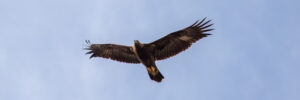
Strauss Wind Farm project – Update
Conservation and Science Committee Update Members of our Conservation/Science Committee continue their determined advocacy for local birds and habitat. Within the last month, Committee members have written three SBAS comment letters to local and federal agencies. Topics included re-zoning land for the state-mandated Housing Element Update, proposed development plans for Naples, and a detailed critique of the Strauss Wind Eagle Take Permit Draft NEPA Environmental Assessment. This last letter, to the US Fish and Wildlife Service (USFWS), required days of effort and is the latest SBAS attempt to win some concessions that could help protect eagles and other raptors from being killed by the wind farm’s giant turbine blades (which are spinning at speeds well over 100 miles per hour at the tips). The Strauss wind farm is in full operation even though the Environmental Assessment has not yet been approved. The draft Take Permit, the subject of our letter,
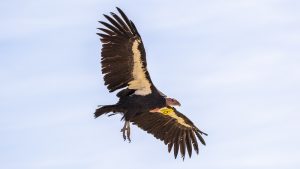
SBAS Comments on Manzana Wind Farm
By Steve Ferry, Project Leader [Editor’s note: This is the full article referred to on page 8 of El Tecolote March-May 2021.] SBAS is tilting at windmills again! After a years-long effort to make the Strauss Wind Energy Project near Lompoc safer for birds (article here), SBAS has tackled the Manzana Wind Power Project. The Manzana Wind Power Project is an existing wind farm with 126 1.5 MW wind turbines in the western Antelope Valley in California, along the southern foothills of the Tehachapi Mountains. Manzana has been in operation since 2012. The main issue with the Manzana Wind Farm is possible impact on the California Condor. The condor population has been increasing and expanding its range further and further into the Tehachapis. Condors are now observed somewhat regularly in the vicinity of Manzana and other wind farms. The possibility of condors being killed at Manzana is real. As a
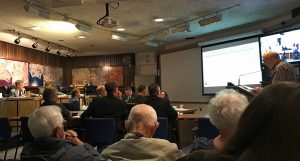
What Audubon Accomplished on the Strauss Wind Project
By Steve Ferry, Project Leader [Editor’s note: This is the full article referred to on page 6 of El Tecolote March-May 2020.] The Strauss Wind Energy Project is a wind farm slated to be built on 3,000 acres of range land about four miles south of the city of Lompoc. The project will comprise 29 wind turbine generators (WTGs), most about 500 feet tall, near the end of San Miguelito Road. Strauss will be built by a German company called BayWa on the same site where a previous project, the Lompoc Wind Energy Project, was proposed about 12 years ago. The Strauss site has an exceptional bird diversity, particularly raptors. In fact, the site has one of the highest raptor concentrations in Santa Barbara County. Red-tailed hawks are abundant and Golden eagles are seen nearly every day. Other raptors seen regularly include White-tailed Kites, Northern Harriers, Cooper’s Hawks, Peregrine Falcons,

Please Speak for the Birds!
Update Sunday 11/17 Are you are planning to speak at the hearing? If so, please arrive at 9:00 a.m. on Nov. 20! The Strauss FEIR will be first on the hearing agenda. County staff and the project applicant will speak, immediately followed by SBAS. The Commissioners would like all SBAS speakers to present consecutively. Speaker time allotments are now from one to three minutes (shorter is preferable). If you prefer to send in your comments, the receipt deadline is no later than noon Monday, Nov. 18. Details The Strauss Wind Energy Project (SWEP) is proposed for a large swath of agricultural land south of Lompoc near Miguelito County Park. Santa Barbara County released the Final Supplemental Environmental Impact Report (FSEIR) for SWEP on Oct. 31, 2019. The FSEIR includes many improvements suggested by Audubon; nevertheless we cannot support the project as currently designed, as it doesn’t provide enough bird protections (see our
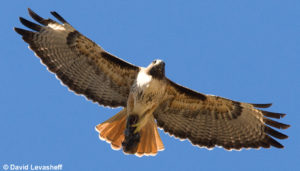
Help the Birds! Be the Wind Under Their Wings!
Update: 29 July 2019 Below are links to the comment letters (pdf format) that Santa Barbara Audubon Society (SBAS), La Purisima Audubon Society (LPAS) and the Law Office of Marc Chytilo have submitted to the Santa Barbara County Planning Department in response to the Strauss Wind Energy Project Draft Supplemental Environmental Impact Report (DSEIR). At this point, the County is reviewing public comments on the DSEIR. The County will take public comments into consideration as they prepare the Final Environmental Impact Report (FEIR), which will probably be released in the fall of 2019. If you’d like to help on Audubon’s effort on Strauss, please contact Steve Ferry at or one of our Conservation Committee Co-Chairs, Lori Gaskin or Jessie Altstatt. And please consider writing a letter and/or testifying on the FEIR. We will keep SBAS membership informed on Strauss with postings on this website and email notifications.
Summary of Conservation Committee Projects
This post describes just a few of the projects that the Conservation Committee is involved in pursuing. They have a fantastic team of volunteers willing to work to further the mission of SBAS directly in our community. If, after reviewing this post, you feel you would like to support the Conservation Committee’s efforts contact them at email hidden; JavaScript is required. The Conservation and Science Committees meet jointly on the first Wednesday of each month at 6:30 PM in the MacVeagh House at the Santa Barbara Museum of Natural History. The Conservation Committee is one of Santa Barbara Audubon Society’s most active standing committees. The Conservation Committee provides the focus for SBAS’s commitment to protecting birds and bird habitat through projects, strategies, and advocacy which advance the conservation and restoration of ecosystems in support biological diversity. The Conservation Committee deals with a myriad of issues. A sampling of the projects
Conservation Committee Update – Spring 2018
The SBAS Conservation Committee…In Context By Aaron Kreisberg and Ken Pearlman “Men and nature must work hand in hand. The throwing out of balance of the resources of nature throws out of balance also the lives of men.” (Franklin D. Roosevelt; inscription on FDR Memorial at the National Mall, Washington, DC) The earliest residents of our region, from the indigenous Chumash to the later-arriving Europeans, implicitly recognized the simple truth embodied centuries later in FDR’s words. As described nearly a quarter of a millennium later in the newly incorporated City of Goleta’s General Plan, it was “the rich soils, verdant vegetation, and harmonious climate of the narrow coastal plain between the Santa Ynez Mountains and the Pacific Ocean” that had inspired the area’s description as “The Good Land” by the 1769 Portola expedition diarist. This “special environmental setting” was further institutionalized in the General Plan’s vision of Goleta as a
Nature Conservancy Buys the legendary Bixby Ranch
News is out today that the Nature Conservancy has purchased the old Bixby Ranch at Point Conception. I can attest to this location’s beauty as I was able to spend a little time there with my brother when he was a guard for the ranch back sometime around 1970. You can read the particulars about this acquisition at the following links: https://www.independent.com/news/2017/dec/22/165-million-private-donation-nature-conservancy-pu/ http://www.latimes.com/local/california/la-me-conservancy-purchase-20171221-story.html and a little history: http://articles.latimes.com/2007/may/13/magazine/tm-bixby19
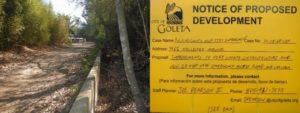
Coronado Seep – Part 3 – City of Goleta’s hearing – Tuesday, July 18
Attend the City of Goleta’s hearing Tuesday, July 18, at 6PM in the Goleta City Council Chambers! At this meeting, the Planning Commission will recommend that the City of Goleta approve Alternative 2b of the Final Environmental Impact Report (FEIR) for the Rancho Estates Mobile Home Park Fire Improvements Project, and reject the project as proposed. Your presence at the hearing will show support for the Planning Commission’s recommendation, in which no road will be built next to Devereux Creek. If you can’t testify in person, please send your comment letter to the City Clerk’s office so it is received before noon on July 17. Comments may be sent via email to email hidden; JavaScript is required or by mail to the attention of the City Council and City Clerk at 130 Cremona Drive, Suite B, Goleta, CA 93117. Many thanks to those of you who attended the FEIR hearing

Coronado Seep – Speak For The Birds – Monday June 26
The City of Goleta has released the Final Environmental Impact Report (FEIR) for the Rancho Estates Mobile Home Park Fire Improvements Project. Though the car wash has been removed, the continuing concern in this project is the building of a gravel emergency access road on top of the bank of Devereux Creek, near the Coronado seep, one of the premiere birding hotspots on the South Coast. Devereux Creek in the Ellwood area of Goleta is an important corridor for migratory and breeding birds and is adjacent to the Coronado Butterfly Preserve. The road would remove trees and violate creekside buffer zones mandated by Goleta’s General Plan. How can you help?
Save the Coronado Seep! Follow up
Many thanks to the numerous birders who turned out at a City of Goleta hearing on November 9. They advocated for changes to the Rancho Estates Mobile Home Park Fire Improvements Project in order to save the Coronado Seep. SBAS representatives urged the City to select the more environmentally-friendly Alternative 2, as well as address its other impacts (click here to view this, and other points). Now you can help by sending a written message to the City. An easy Tedmplate letter is here. Letters must be sent to Joe Pearson, City Planner, at email hidden; JavaScript is required no later than 5:00 PM Monday, November 21st. If you have questions or would like to help the Conservation Committee on this project, please email email hidden; JavaScript is required or call (805) 964-1468. Send in your words for the birds!
Save the Coronado Seep!
Testify on Wednesday, November 9th, 5:30PM in Goleta City Council Chambers! The City of Goleta has released a Draft Environmental Impact Report (DEIR) for the Rancho Estates Mobile Home Park Fire Improvements Project. The proposed fire road would be built on top of the bank of Devereux Creek, near the Coronado seep, one of the premiere birding hotspots on the South Coast. Devereux Creek in the Ellwood area of Goleta is an important corridor for migratory and breeding birds and is adjacent to the Coronado Butterfly Preserve. The proposed project would remove trees and violate the creekside buffer zones that are mandated by Goleta’s General Plan.
Shelby Development Temporarily Suspended
by Steve Ferry Santa Barbara Audubon recently announced that SBAS had joined a coalition of Santa Barbara County community and environmental organizations called the Shelby Foothills Coalition (SFC). SFC advocates for the preservation of land zoned for agriculture on the South Coast to maintain open space and bird habitat. SFC was formed from community concerns about the recent, rapid, massive development that has occurred in the Goleta Valley. These huge developments are threatening the quality of life in the Good Land with traffic congestion, crowding, environmental degradation, and loss of open space.
SHELBY FOOTHILLS COALITION
THE SHELBY FOOTHILLS COALITION FORMS TO OPPOSE THE SHELBY DEVELOPMENT PLAN Press Release 2016-04-20 Today a coalition of Santa Barbara County organizations is announcing the formation of the Shelby Foothills Coalition (SFC). SFC is the product of a series of meetings to discuss community challenges engendered by the proposal to build 60 high-end houses on the Shelby property north of Cathedral Oaks Road near Glen Annie Golf Course. Development on this parcel, which is zoned for agriculture, is contrary to Goleta’s General Plan.
Our Busy Conservation Committee
by Cherie Topper [Editor’s note: This is the full article referred to on page 1 of El Tecolote April/May 2016.] Have you ever wondered what our Conservation Committee is up to? You may be surprised to discover both the volume and the variety of our activities in the community on SBAS’s behalf. We are fortunate to have experts on this committee who are familiar with all aspects of conservation – botany and native plants, the California Environmental Quality Act (CEQA), Planning, Engineering, and, of course, Ornithology! In fact, you may be motivated to join this dynamic group of smart and dedicated volunteers who are making an impact on our community. What We Do The Conservation Committee provides the focus for the Chapter’s commitment to advancing Audubon’s environmental mission in the community. The Committee, facilitated by co-chairs Virginia Gardiner and Darlene Chirman, oversees the development and implementation of goals, objectives, and
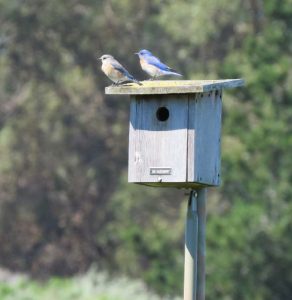
2022 Nest Box Program Report
An array of nest boxes at Lake Los Carneros, Goleta, California acts as a scientific monitoring instrument utilizing TRES and WEBL as vectors to evaluate aspects of their lives and the quality of their environment over time. This report was written as Don Schroeder retires from leading the project after 14 years of dedicated service. We are currently looking for someone to take the reins of this flagship program. Please reach out through the Contact link if you are interested. This Link will download the 2022 Tree Swallow Nest Box report prepared by Steven Senesac and Don Schroeder.
Breeding Bird Study: 2020 Progress Report
by Mark Holmgren The purpose of the BBS is to bring together information on all breeding birds in all parts of the county to facilitate explorations of the relationships of birds to land. These explorations can inform conservation, bird watching, research, environmental planning, and education at several levels. After 5 years of gathering historic and recent breeding records the database holds 9352 records of 188 species known to breed in Santa Barbara County. Many decisions can now be made species by species. For example, we can now determine the breeding period of each of the common species rather than assuming a broad breeding period for all breeding species combined. Another strength of the BBS is the 1500 photos of breeding that provide evidence and examples of where and how breeding takes place. View the mapped records, play with the database, and you can submit breeding records at the SB Audubon website: https://santabarbaraaudubon.org/santa-barbara-county-breeding-bird-study/. We’re
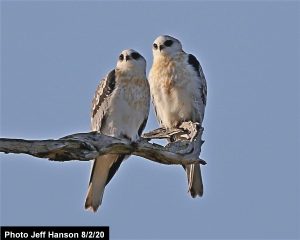
White-tailed Kite Watch 2020 Summary
by Mark Holmgren Breeding presence of WTKI in the Goleta Valley Study Area* has been tracked for more than 30 years. In 2020, the breeding period extended from February into September. 11 nesting events produced a minimum of 14 young. We do not know how many of these achieved independence from parental care. More Mesa and Lake Los Carneros are the most reliable and often the most productive open spaces hosting kites. They produced 4 broods and 2 broods respectively. Other open spaces that hosted breeding kites were Winchester Cyn, the Ellwood neighborhoods (but not Ellwood Mesa), and San Marcos Foothills. Other large open spaces that have supported Kites in the past did not do so this year: Goleta Slough, San Antonio Creek, and Ellwood Mesa. We hope for more volunteer Kite Watchers to assist tracking kites and other raptors in our open spaces in 2021. * The Study Area is bounded by
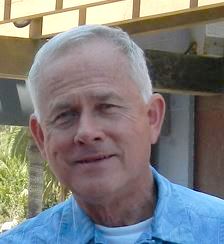
2020 Nest Box Program Report
This is the content of the presentation given by Steve Senesac to the Science / Conservation committee meeting earlier in August on the results of the Tree Swallow nest boxes at Lake Los Carneros. Click on the title page for a larger image then scroll through the slides by clicking the arrow on the right of the image.
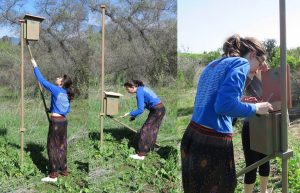
Santa Barbara Audubon Society – Nest Box Program
By Steve Senesac – Science Chair [Editor’s note: This is the full article referred to on page 5 of El Tecolote March-May 2020.] Brief History In 2004, Jan Wasserman presented the Tree Swallow Nest Box Program that she was doing in Ventura. This ignited the interest of some our members at that time, David Kissner, Dave Eldridge, and Don Schroeder. Dave Eldridge was instrumental in building many of the boxes and Don Schroeder developed a scientific methodology for monitoring the boxes, as well as the basic training materials that we still use. In time, the reins passed on to Andy Lanes and Richard Figueroa, who involved students from UCSB and evolved our basic training program. Elaine Tan, Peter Thompson, Betsy Moony, Jayne Wamsley, Diane and Leah Vasquez, and again, Don Schroeder have been the mainstay of the program these past several years, as well as a continued interest from UCSB. Recently
SBAS Science – A 2019 Summary
2019 continued to be a busy year for our small but dedicated Science committee led by Steve Senesac. Below is a brief summary of the programs they are working on.Nest Boxes SBAS has 22 nest boxes at Lake Los Carneros. They are used by both Tree Swallows and Western Bluebirds. The nesting season runs from about March to August. This year we had six dedicated volunteers checking the status of the nests each week and another team of four banding or checking the bands of the birds at appropriate times. In 2019 we had 104 Tree Swallow and 10 Western Bluebirds fledged. From the banding we determined that the Western Bluebirds were returning to the same nests each year with the same mate. The Tree Swallows however were not all returning and then to different nests with different mates. The Tree Swallows often do two nests in one season and
Post-drought Progress Report
Submitted by Mark Holmgren This is an update on the post-drought progress towards recovery of White-tailed Kites in the Goleta Valley. We are approaching the middle of the Kite breeding period. Recall that last year we had only two breeding events—at western More Mesa and western Ellwood Mesa. In 2015, we also had only two. They successfully bred somewhere in western Goleta Slough and at western More Mesa, with nest starts, but no completions, at Winchester Cyn and San Antonio Creek trail. This year we know of only 3 occupied territories. At 2 of them—Lake Los Carneros and western More Mesa—breeding is progressing with chicks visible in nests. This morning two fledgling Kites with an adult loosely attending them was a surprise at western Ellwood Mesa. Prior to today we knew that adults were present at Ellwood, but we had no idea they were well into breeding. These two babies
Breeding Bird Study of Santa Barbara County
by Adrian O’Loghlen [Editor’s note: This is the full article referred to on page 3 of El Tecolote September-November 2016.] One of the most informative approaches for assessing how the rapid and extensive development of urban and rural lands affects local bird populations is to monitor the breeding activity of species that have historically bred in an area. Furthermore, collecting this type of information is important more generally because it is widely accepted that birds can be indicators and provide insights into the ‘health’ of habitats and ecosystems used by all local wildlife. We are very fortunate in SB County that the process of gathering this key information is in progress and a sizable database of local bird breeding records already exists. We have Mark Holmgren to thank for this. Back in the 1980’s, when he was working as the Curator of the Vertebrate Museum at UCSB, he recognized the
The SBAS Tree Swallow Nest Box Project
Air BNB Audubon Style By Steven Senesac [Editor’s note: This is the full article referred to on page 3 of El Tecolote April/May 2016.] Introduction The Tree Swallow is a cavity nester that naturally nests in tree cavities (often made by woodpeckers). Human development frequently removes many trees and those that remain are often groomed in a way that minimizes dead branches (most appropriate for cavity nests). Such habitat disturbance is the likely reason why tree swallows dropped to the status of being an uncommon breeder around Santa Barbara and Ventura. Jan Wasserman was instrumental in reversing this in Ventura beginning in the l980’s and continuing into this century. Santa Barbara Audubon took inspiration from her efforts and began its own nest box program in 2005. Dave Eldridge and Don Schroeder were two of the people instrumental in developing the program that I inherited in July 2015 when I became
2014 Santa Barbara County Science Fair Winner of the Audubon Award
The 2014 Santa Barbara County Science Fair was held in March, and one of the judges was Richard Figueroa, SBAS Science Chair who had the honor of presenting the Santa Barbara Audubon Award to this year’s winner, Righetti High School senior, Danny Luu. Danny’s project: “The Effects of Runoff on Salvia Leucantha and Hummingbird Interactions” also won a gold medal and the Best in Fair award. Danny Luu was invited to present his winning science fair project at the April SBAS program, a presentation of Jeff McLoughlin’s film: The Condor’s Shadow held at the Santa Barbara Museum of Natural History. The Santa Barbara Audubon Award is named in honor of founding SBAS member, Joy Parkinson.
Tricolored Blackbird California Survey 2014
Richard Figueroa, SBAS Science Chair, has been recruiting and coordinating volunteers to monitor and collect survey data for tricolored blackbirds to document their decline in numbers. Our volunteers have surveyed sites in Santa Ynez and Cuyama. The conservation of the species has received increased attention due to the petition to list the species under the protections of the federal and state of California Endangered Species Acts.Although these petitions were declined, the tricolored blackbirds remain a species of concern and the focus of conservation efforts. CA Audubon and UC Davis are part of the Tricolored Blackbird Working Group that has produced a conservation strategy, a guide to conservation efforts and a response to concerns over documented declines in the distribution and abundance of the species. These declines occurred primarily in the 20th century in an apparent response to widespread, landscape-level changes in regions where they were formerly abundant. The Conservation Strategy can be downloaded here: Conservation Plan
White-tailed Kite Monitoring 2013
By Anna Hilliard Two years ago, an El Tecolote article posed the question: “What might it take to create a formalized local monitoring program for the white-tailed kite?” This September, with the help of dedicated observers and coordinators, the White-tailed Kite Monitoring Project (aka Kite Watch) wrapped up its second successful season of nest and roost site monitoring sponsored by donors to the SB Audubon Society. Under the guidance of long-time kite watcher Mark Holmgren, and project coordinators Mariah Edmonds and Anna Hilliard, student interns and community volunteers successfully collected data on breeding and roosting territories throughout the Goleta area. After the massive influx of kites seen in the 2012 breeding season, this year’s kite crop is much more modest. Kites are capable of rearing two clutches during a breeding season if conditions are right. This season, the dry winter preceding the breeding season, combined with a lack of spring
Conservation Committee Update
By Jonathan Appelbaum It has been a busy summer for the Santa Barbara Audubon Society’s Science and Conservation Committee. Under the guidance of outgoing Conservation Chair, and new SBAS Co-President Steve Ferry; outgoing Science Chair, and new SBAS Education Chair, Andy Lanes, and myself, the newly installed conservation chair, the Committee has been active in a variety of research, policy and advocacy arenas. The SBAS Science Committee was active in organizing and staffing research locally on the Central Coast including studying black phoebe nesting at Arroyo Hondo Preserve, tree swallow nest box monitoring at Lake Los Carneros and Coal Oil Point Reserve and of course white-tailed kite monitoring throughout the Santa Barbara area. The chapter joined forces with other conservation organizations such as the Environmental Defense Center, Santa Barbara Channelkeeper and the Urban Creeks Council to form a more powerful environmental coalition and lend its voice to a variety of
Tree Swallow Nest Box Projects in Santa Barbara
Opportunities to Learn Nesting Biology While Improving Our Environment By Don Schroeder and Dave Eldridge Introduction In October, 2004, the Santa Barbara Audubon Society (SBAS) hosted a presentation by Jan Wasserman on the Tree Swallow nest box projects at sites around Ventura. She shared her experience with setting up and conducting these projects. She and a small band of volunteers have been able to establish nesting sites for this species which had previously dropped to the status of being a rare breeder in Ventura and SB Counties. The tremendously exciting result was that, in a period of about 12 years, over 10,000 young swallows have been fledged from nest boxes around Ventura. It seems very fitting that humans can be such a driving force towards restoring a bird population that had been forced into a steep decline due to human activities such as agriculture and housing development. The Ventura projects

